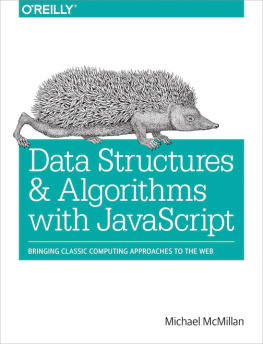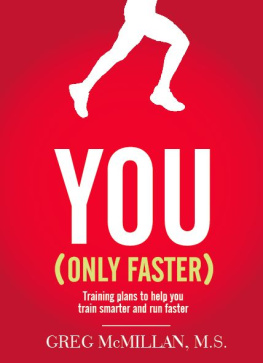Thank you for purchasing this Scribner eBook.
Sign up for our newsletter and receive special offers, access to bonus content, and info on the latest new releases and other great eBooks from Scribner and Simon & Schuster.

or visit us online to sign up at
eBookNews.SimonandSchuster.com
What if you cant afford nine-dollar tomatoes? That was the question award-winning journalist Tracie McMillan couldnt escape as she watched the debate about Americas meals unfold, one that urges us to pay foods true costwhich is to say, pay more. So in 2009 McMillan embarked on a groundbreaking undercover journey to see what it takes to eat well in America. For nearly a year, she worked, ate, and lived alongside the working poor to examine how Americans eat when price matters.
From the fields of California, a Walmart produce aisle outside of Detroit, and the kitchen of a New York City Applebees, McMillan takes us into the heart of Americas meals. With startling intimacy she portrays the lives and food of Mexican garlic crews, Midwestern produce managers, and Caribbean line cooks, while also chronicling her own attempts to live and eat on meager wages. Along the way, she asked the questions still facing America a decade after the declaration of an obesity epidemic: Why do we eat the way we do? And how can we change it? To find out, McMillan goes beyond the food on her plate to examine the national prio-rities that put it there. With her absorbing blend of riveting narrative and formidable investigative reporting, McMillan takes us from dusty fields to clanging restaurant kitchens, linking her work to the quality of our mealsand always placing her observations in the context of Americas approach not just to farms and kitchens but to wages and work.
The surprising answers that McMillan found on her journey have profound implications for our food and agriculture, and also for how we see ourselves as a nation. Through stunning reportage, Tracie McMillan makes the simple case thatcity or country, rich or pooreveryone wants good food. Fearlessly reported and beautifully written, The American Way of Eating goes beyond statistics and culture wars to deliver a book that is fiercely intelligent and compulsively readable. Talking about dinner will never be the same again.


TRACIE MCMILLAN has written about food and class for a variety of publications, including, The New York Times; O, The Oprah Magazine; Harpers Magazine; Saveur; and Slate . From 2001 to 2005 she was the managing editor of the award-winning magazine City Limits, where she won recognition from organizations ranging from the James Beard Foundation to World Hunger Year. She is based in Brooklyn.
 | www.traciemcmillan.com
TMMcMillan |
MEET THE AUTHORS, WATCH VIDEOS AND MORE AT
SimonandSchuster.com
THE SOURCE FOR READING GROUPS
JACKET DESIGN AND PHOTOGRAPH BY REX BONOMELLI
COPYRIGHT 2012 SIMON & SCHUSTER
. The class I profiled was run by Bryant Terry, now a celebrated food activist and writer perhaps known best for his cookbooks, which include Grub, which he co-wrote with Anna Lapp, and Vegan Soul Kitchen.
. In the years since that work was published, local and federal officials across the country have begun to introduce wireless terminals at farmers markets so that clients of the Supplemental Nutrition Assistance Program (SNAP; colloquially known as food stamps) can use their benefits to buy farm-fresh produce.
. Our soul sandwich should be made from all-natural ingredients, well thought out and put together individually so we know exactly what goes into it and our belly. Whole foods or no food at all, I always say... by making optimum health job number one, we will be better prepared and equipped to live each day to the fullest, attaining great joy and happiness in our American Dream. Each meal should be a major ThanXGiving gitdown party, showing grand appreciation for these amazing gifts. (Nugent 2005)
. There are no comparable data between countries representing what individual households spend on child care. However, for comparative purposes, France spends 28.5 percent of its gross domestic product on social programs, and Italy, 25.5. Both countries offer free, public child care for infants until age three. The United States, by contrast, spends 15.7 percent of its GDP on social programs and the cost of child care is almost always the responsibility of the parents. Low-income American parents, for example, spend an average of 18 percent of their income per child in child care. (Organization for Economic Cooperation and Development 2011; Organization for Economic Cooperation and Development 2006a; Organization for Economic Cooperation and Development 2006b)
. Most people in the areaat the southern end of the San Joaquin Valley, the southern half of the Central Valleydrank from five-gallon jugs they filled up at dispensing stations in parking lots and at grocery stores. Tap water there comes from groundwater, which is particularly vulnerable to nitrate contamination from fertilizers that percolate into the aquifer. (Cowan 2005) In 2007, three-quarters of violations of nitrate levels in California drinking water occurred in the San Joaquin Valley. (Ward et al. 2005) The Community Water Center, a nonprofit advocacy group based in the agricultural county of Tulare, found that valley residents spend up to ten percent of their income on water, five times the affordable limit set by the Environmental Protection Agency. (Community Water Center 2011)
. From 1994 to 1999, sixty-four farmworkers died while riding in farm labor transportation vehicles, leading Congress to appropriate $4 million to support licensed bus and group transport in 2000. Nonetheless, many workers carpool. Two years after Congress approved group transport funding, 42 percent of all farmworkers nationwide rode with others or with a raitero, someone who informally operates a taxi service to the fields, often a supervisor or fellow worker; carpooling was much more common among foreign-born newcomers, 77 percent of whom shared rides in 20012002. (Agricultural Worker Health Project 2011; U.S. Department of Labor, Office of the Assistant Secretary for Policy, and Office of Programmatic Policy 2005)
. Using farm labor contractors, who in part play the same role for farmers that overseas factories play for clothing brands, became more popular with California growers in the 1970s after farmworkers began demanding higher wages. Today, between 50 and 60 percent of California farmers make use of contracted labor for at least part of their labor needs, with small farms spending more than half their labor budget on subcontracted labor, compared with about one-third of large farms. (Bon Apptit Management Company Foundation and United Farm Workers 2011) Workers for contractors typically make lower wages than do those employed directly by farms (Martin 2011b), but migrant workers may find themselves vulnerable to far worse situations: In September 2010, the U.S. Department of Justice filed the largest human trafficking case in American history against Global Horizons, a Los Angelesbased labor contracting company, for its treatment of four hundred agricultural workers in Washington and Hawaii. The conditions faced by those workers, wrote the New York Times editorial page, constituted slavery without shackles.( New York Times 2011)
Next page




















